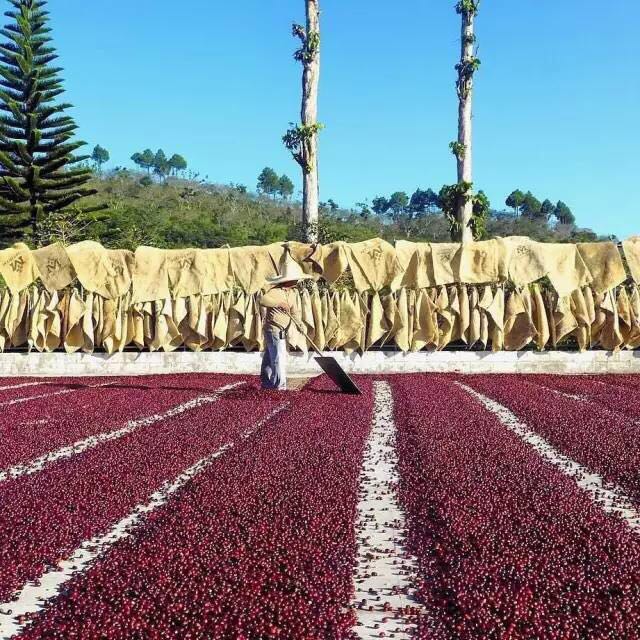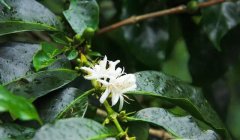How Guatemala gave birth to the unique "cigarette coffee" Antigua
There are a lot of counterfeit Antigua coffee. When it comes to the real Antigua Coffee Association, the Antigua Coffee Association was rampant in 2000. The authentic Antigua Coffee Farmers Association (APCA), composed of Antigua coffee farmers and producers, was listed with the support of the government. 34 Antigua estates joined. All the Antigua beans purchased by Osher belong to this association. Members can print the emblem of the association on the sack to prove that the coffee produced is 100% Antigua, and will mark the year of production, such as the following picture on the back of the sack, there is an APCA association logo, and the harvest year is marked, including the production batch number. In addition, the manor has the association certificate, as shown below.
Antigua is the most famous among the eight major producing areas in Guatemala, mainly because the coffee-growing areas are all located in high-altitude volcanic areas. The following four points are the main reasons why Antigua's unique micro-geography forms its unique flavor:
(1) Multi-functional volcanic fertile soil:
There are three major volcanoes in Antigua, Acatenango (Acatenango is also the name of the eighth producing area of Guatemala), Fuego, Agua Volcanoes. Among them, Fuego- is an active volcano, and its active capacity brings fertile volcanic soil and unique volcanic pumice to the Antigua area for many years, which is the coolant after the eruption of volcanic magma, with porosity and thermal insulation, so it is very suitable for moisturizing in the soil. Because the annual rainfall in the Antigua area is only about 1000 mm, in the eight major producing areas, the rainfall is relatively small, and sufficient moisture is needed for coffee growth. Here, the moisturizing capacity of volcanic pumice More or less can make up for the lack of rainfall, while with the common shade trees in this area, so that the water is not easy to lose and make the coffee fruit more unique flavor.
(2) High density shade trees:
In addition to shading, it can also prevent frost damage and form a unique microclimate. For the shade trees of St. Raphael, she planted Gravilea, which shaded and grew fruits of economic value. Due to the cold night in Antigua District, there will be occasional low temperature or even frost damage from December to February. High-density shade trees will play their role to avoid frosting coffee trees. At the same time, the groundwater level in Antigua area is not deep, and shade trees are easy to absorb water. Form a microclimate suitable for plant growth with the surrounding coffee trees.
(3) severe temperature difference between day and night:
The temperature difference between day and night should be at least more than 10 degrees, which will help the sweetness and unique flavor of coffee berries.
(4) High altitude:
For coffee trees growing at high altitude, the beans are hard, the aroma of coffee is higher, and the flavor is more prominent.
In the case of St. Raphael, the average annual temperature is 23.C, the annual rainfall is 1000 mm, the soil is clay, sandy soil, limestone, well-balanced structure and fertile, relative humidity 65; compared with the above four major factors, it is easy to understand how to have excellent planting conditions.

Important Notice :
前街咖啡 FrontStreet Coffee has moved to new addredd:
FrontStreet Coffee Address: 315,Donghua East Road,GuangZhou
Tel:020 38364473
- Prev
The special aroma of aromatherapy berries is described by the flavor of Guadillavette Nan Fruit Coffee.
Vivette Nan Fruit Coffee is delicate with a trace of melancholy, contradictory fusion of sour and sweet, but so rich. The aroma is like smoke in the fingers, but it is full of sweet and fragrant berries. Place of origin: Guatemala Antigua style: mellow, bright sour and sweet aromas: unique aromas of tobacco and berries, and some permits to aroma it.
- Next

Introduction to microclimate and environmental quality of Antigua, a famous producing area of Guatemala
Antigua Coffee the Mala Antigua Valley has always been the most famous coffee producing area in Guatemala. The microclimate of the Antigua Valley provides excellent conditions for growing coffee, which is known all over the world. The road to fame of this producing area began decades ago when some Japanese coffee traders discovered the excellent coffee here. Rich volcanic soil, low humidity, plenty of sunshine and
Related
- Detailed explanation of Jadeite planting Land in Panamanian Jadeite Manor introduction to the grading system of Jadeite competitive bidding, Red bid, Green bid and Rose Summer
- Story of Coffee planting in Brenka region of Costa Rica Stonehenge Manor anaerobic heavy honey treatment of flavor mouth
- What's on the barrel of Blue Mountain Coffee beans?
- Can American coffee also pull flowers? How to use hot American style to pull out a good-looking pattern?
- Can you make a cold extract with coffee beans? What is the right proportion for cold-extracted coffee formula?
- Indonesian PWN Gold Mandrine Coffee Origin Features Flavor How to Chong? Mandolin coffee is American.
- A brief introduction to the flavor characteristics of Brazilian yellow bourbon coffee beans
- What is the effect of different water quality on the flavor of cold-extracted coffee? What kind of water is best for brewing coffee?
- Why do you think of Rose Summer whenever you mention Panamanian coffee?
- Introduction to the characteristics of authentic blue mountain coffee bean producing areas? What is the CIB Coffee Authority in Jamaica?

